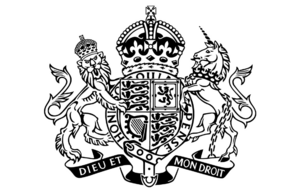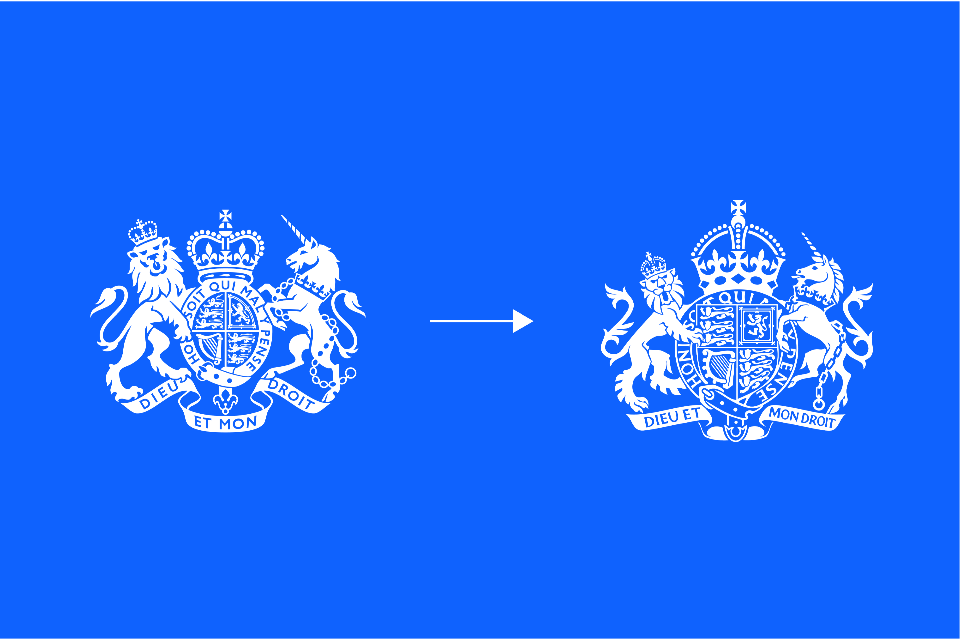New Coat of Arms artwork unveiled
The new artwork for the Coat of Arms has been unveiled today for use by the Government.

A new artistic rendering of the Royal Coat of Arms has been unveiled today following the accession of His Majesty The King, with new artwork of the Royal Arms usually being created for each new reign. The constituent parts of the Royal Coat of Arms have not changed and remain the same as they have been since Queen Victoria came to the throne in 1837.
The Royal Arms are used to denote the Royal Authority by which the Government acts - it is “His Majesty’s Government” so by using the Coat of Arms, the Government is showing it is acting in The King’s name.
The lion supporter in the Arms represents England, while the unicorn represents Scotland. Around the shield is the blue and gold Garter, the symbol of the UK’s oldest and most senior Order of Chivalry, the Most Noble Order of the Garter. The King’s motto, “Dieu et Mon Droit”, which translates from French as ‘God and My Right’, appears below the shield.
The Government always uses a simplified version of these Arms, known as the Lesser Arms, which will now be used going forward, and feature in the branding of all Government departments. This is the Coat of Arms that you see on official Government documents and passports.
The new rendering of the Coat of Arms has been drawn and painted by heraldic artist Timothy Noad, who has worked for over 35 years at the College of Arms in London. Noad has previously worked on similar projects including the design of the Royal Cyphers for The King and Queen, and the Stole Royal made for last year’s Coronation. He also contributed the illuminated first page for the Coronation Roll. Speaking about this design, Noad said “It has been a great privilege and an exciting challenge to provide the new artwork for the Royal Arms. Having designed the Royal Cypher for HM King Charles III, as well as many different versions of the Royal Arms in colour and black and white, I feel as if I have been part of a major rebranding process for the new reign and have been working on these designs for the best part of two years.”

Heraldry was first developed in northern Europe in the first half of the12th century for purposes of identification, and it was widely adopted by kings, princes, knights and other major power holders throughout western Europe.
The three lions of England, which constitute part of the Royal Arms, date back to the second Great Seal of Richard I, created in about 1195. In 1837 British monarchs ceased to be King of Hanover and the element representing Hanover was dropped from the shield. Although the Arms have remained unchanged since then, different artistic renderings of them have been used in different reigns.
The Government Communication Service has launched new artwork for emblems for other Government bodies at the same time, including the Judicial Committee of the Privy Council and a new rendering of the Royal Badge for Wales used by the Wales Office incorporating the Tudor Crown. The artwork for the Government version of the Royal Arms used in Scotland is not changing.
All the changes the Government will make involving the new artwork for the Arms are to be made on a no-cost or low-cost basis to minimise waste, and to keep expenditure to an absolute minimum. The artist has been commissioned through the College of Arms and has been paid for the work on a pro-rata basis, and further modifications to the Lesser Arms have been made by in-house design teams rather than external agencies.
The new Lesser Arms will first begin to appear on Government websites; physical representations will appear on buildings as and when it is necessary for existing representations to be replaced.